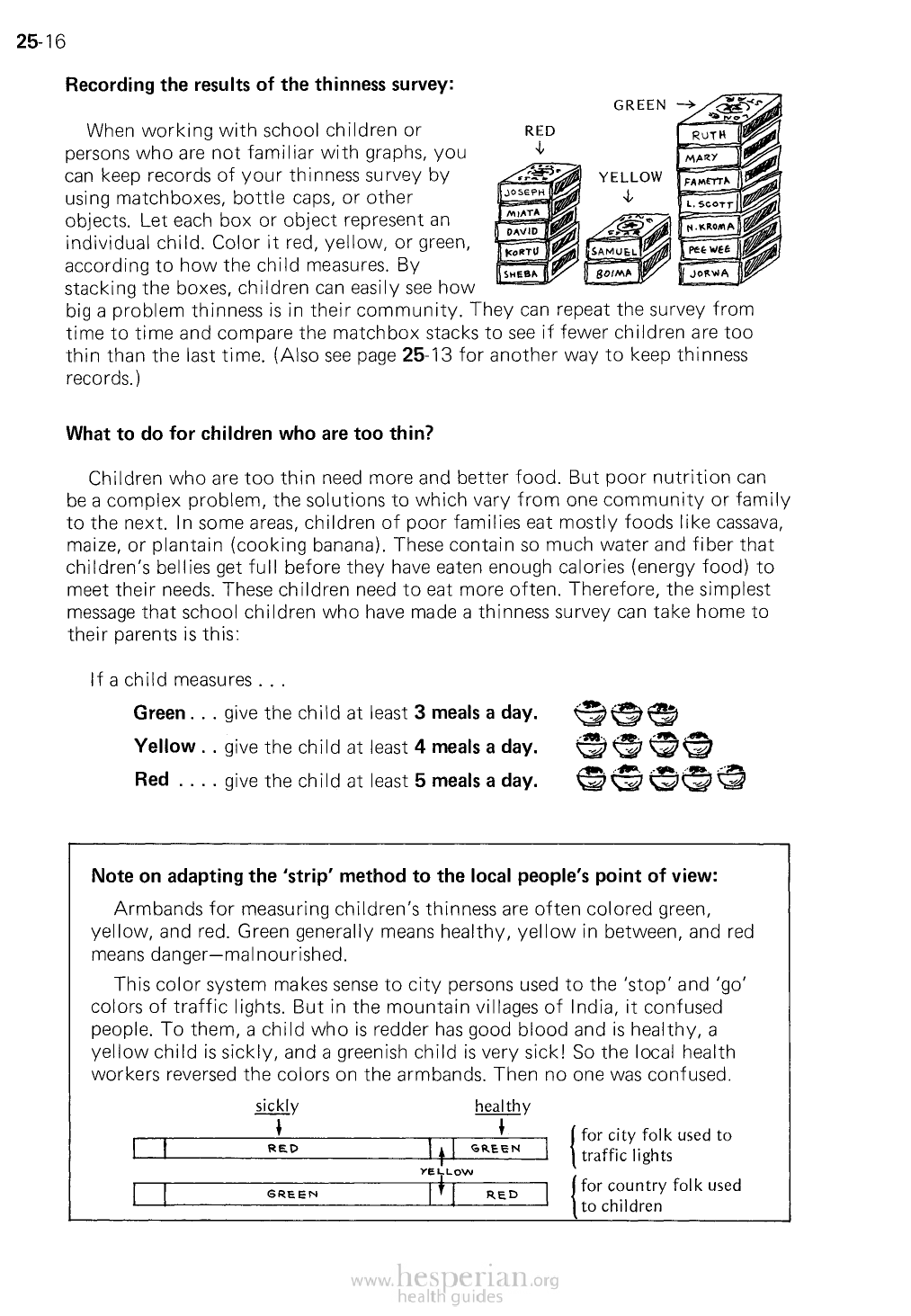
25-16
Recording the results of the thinness survey:
When working with school children or
persons who are not familiar with graphs,
you can keep records of your thinness survey
by using matchboxes, bottle caps, or other
objects. Let each box or object represent an
individual child. Color it red, yellow, or green,
according to how the child measures. By
stacking the boxes, children can easily see how
big a problem thinness is in their community. They can repeat the survey from
time to time and compare the matchbox stacks to see if fewer children are too
thin than the last time. (Also see page 25-13 for another way to keep thinness
records.)
What to do for children who are too thin?
Children who are loo thin need more and better food. But poor nutrition can be a
complex problem, the solutions to which vary from one community or family to the
next. In some areas, children of poor families eat mostly foods like cassava, maize,
or plantain (cooking banana). These contain so much water and fiber that children’s
bellies get full before they have eaten enough calories (energy food) to meet their
needs. These children need to eat more often. Therefore, the simplest message
that school children who have made a thinness survey can take home to their
parents is this:
If a child measures . . .
Green. . . give the child at least 3 meals a day.
Yellow. . . give the child at least 4 meals a day.
Red. . . . . give the child at least 5 meals a day.
Note on adapting the ‘strip’ method to the local people’s point of view:
Armbands for measuring children’s thinness are often colored green, yellow,
and red. Green generally means healthy, yellow in between, and red means
danger—malnourished.
This color system makes sense to city persons used to the ‘stop’ and
‘go’ colors of traffic lights. But in the mountain villages of India, it confused
people. To them, a child who is redder has good blood and is healthy, a
yellow child is sickly, and a greenish child is very sick! So the local health
workers reversed the colors on the armbands. Then no one was confused.
sickly
healthy
{ for city folk used to
traffic lights
{ for country folk used
to children